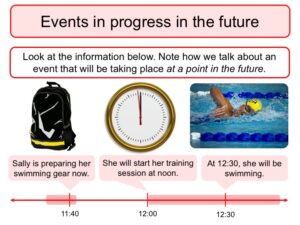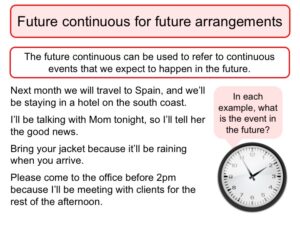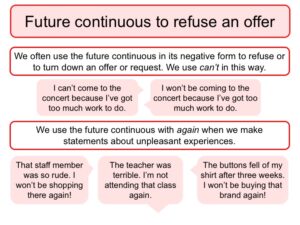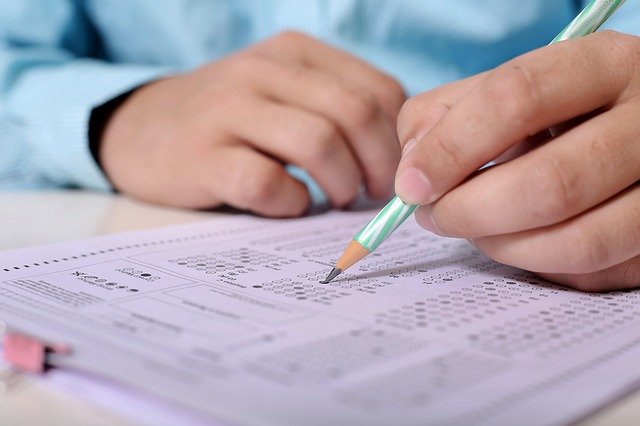5 min read
Share this post

…yet it can be challenging for students to use it. We recommend introducing the future continuous tense when your students feel comfortable using the present continuous for actions in progress at the time of speaking. Additionally, it’s best to wait to introduce the tense until your students are equally comfortable with the simple future with will. Students should also have had exposure to the past continuous, for actions in progress at a point in the past.
When you introduce the future continuous, start with a quick review of the present continuous with expressions of time such as now, at the moment, this week, etc. It’ll help if you use a timeline.
On the same timeline, you can progress to events that will take place at some point in the future. This is our primary use of the future continuous. When you introduce an event in the future, mark both the start and finish times. This allows you to show the period when the event will be happening, and allows you to naturally introduce the tense.
In this lesson, the student is introduced to the form and use as mentioned above. We also show how the tense is used for predicting events.


This lesson looks at the future continuous for future arrangements. The lesson examines how we often we use this tense with adverbs of possibility, since the future cannot be predicted with certainty. In spoken English, we also use the future continuous regularly with still and an adverb of possibility. We provide ample exercises for your student to practice.


In this lesson, we introduce the negative and question forms. We also look at a common usage: for formal and polite questions regarding offers and requests. These forms may seem a little wordy or unnecessary to some students, yet the ability to speak politely in English is a necessary requirement to function correctly in the language. Finally, we look at the use of again with the future continuous tense. This usage expresses displeasure about an event in the past that we do not wish to experience in the future.


As always, each lesson has a homework activity allowing the student to practice the language explored in the lesson.
Share this post



2 Comments
Love these new lessons! So far I’ve used Future Continuous 1 and Future Continuous 2 with very positive responses from my online students. I only have two online students at the moment because I teach full time during the day and at a local college in the evenings. However, I do use Off 2 Class lessons periodically in my classroom because the visuals are great, the grammar charts are clear and concise, and the exercises are well structured. Thanks guys!
Hi Lesa,
Thank you for your positive feedback. It’s always nice to hear from our users, and even more, great to receive positive feedback.
James